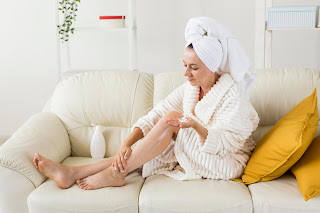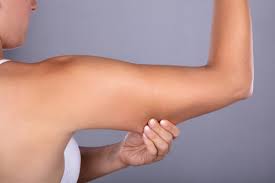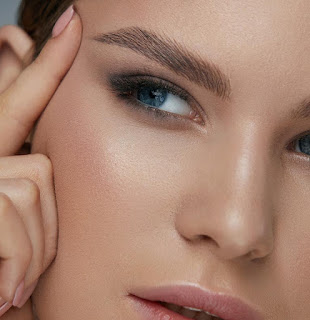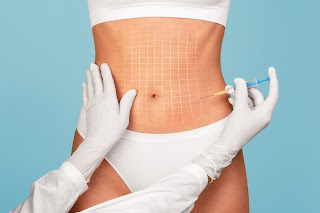Banish Ingrown Hairs: Top Treatments for Legs
Dealing with ingrown hairs can be frustrating and uncomfortable, especially when they appear on your legs. Treatment of ingrown hair in the legs [علاج الشعر تحت الجلد في الساقين]is essential not only for aesthetic reasons but also to prevent discomfort and potential infections. This comprehensive guide will explore the causes, prevention methods, and effective treatments to help you achieve smooth, hair-free legs.
Understanding Ingrown Hairs
Ingrown hairs occur when hair grows back into the skin instead of rising up from it. This can lead to inflammation, pain, and sometimes infection. Ingrown hairs are commonly found in areas where hair is frequently shaved, waxed, or plucked, making the legs a prime target.
Causes of Ingrown Hairs
Understanding the causes of ingrown hairs is the first step in preventing and treating them. Some common causes include:
- Improper Shaving Techniques: Shaving too closely or using a dull razor can cause hair to grow back into the skin.
- Hair Removal Methods: Waxing and plucking can also lead to ingrown hairs by removing hair below the skin's surface.
- Curly Hair: People with curly hair are more prone to ingrown hairs as the hair tends to curl back into the skin.
- Tight Clothing: Wearing tight clothing can cause hair to grow back into the skin, especially around the legs.
Prevention of Ingrown Hairs
Preventing ingrown hairs involves adopting good hair removal practices and skincare routines. Here are some effective prevention methods:
- Proper Shaving Techniques: Always shave in the direction of hair growth using a sharp, clean razor. Avoid pressing too hard on the skin.
- Exfoliation: Regular exfoliation removes dead skin cells that can clog hair follicles. Use a gentle scrub or an exfoliating glove on your legs.
- Moisturization: Keep your skin hydrated to prevent dry skin, which can exacerbate ingrown hairs.
- Avoid Tight Clothing: Wear loose-fitting clothing, especially after hair removal, to reduce friction and irritation.
Effective Treatments for Ingrown Hairs
When prevention isn't enough, there are several treatments available to manage and eliminate ingrown hairs. Here are the top treatments for the treatment of ingrown hair in the legs:
1. Exfoliation
Regular exfoliation is crucial in treating ingrown hairs. By removing dead skin cells, you can free trapped hairs and prevent new ones from becoming ingrown. Use a gentle scrub or chemical exfoliant containing alpha-hydroxy acids (AHAs) or beta-hydroxy acids (BHAs).
2. Topical Treatments
Topical treatments can reduce inflammation and treat infection. Look for products containing:
- Salicylic Acid: Helps exfoliate the skin and unclog hair follicles.
- Glycolic Acid: Promotes skin cell turnover and helps prevent ingrown hairs.
- Tea Tree Oil: Known for its anti-inflammatory and antiseptic properties, it can soothe and heal the skin.
3. Warm Compresses
Applying a warm compress to the affected area can help soften the skin and draw out the ingrown hair. This method also reduces swelling and eases discomfort.
4. Tweezing
For ingrown hairs that are visible and near the surface, gently using sterilized tweezers can help remove the hair. Avoid digging into the skin, which can lead to infection and scarring.
5. Laser Hair Removal
Laser hair removal is a long-term solution that reduces hair growth and, consequently, the occurrence of ingrown hairs. This method targets hair follicles, preventing new hair from growing.
6. Retinoids
Prescription retinoids can help exfoliate the skin and promote cell turnover. They are effective in treating severe cases of ingrown hairs but should be used under medical supervision due to potential side effects.
7. Antibiotic Creams
If an ingrown hair becomes infected, antibiotic creams can be prescribed to treat the infection and prevent it from spreading.
Home Remedies for Ingrown Hairs
In addition to medical treatments, several home remedies can help alleviate the discomfort of ingrown hairs and promote healing:
1. Sugar Scrub
A homemade sugar scrub can gently exfoliate the skin. Mix sugar with olive oil or honey and apply it to the affected area in circular motions.
2. Baking Soda Paste
Baking soda has anti-inflammatory properties that can reduce swelling and redness. Mix baking soda with water to form a paste and apply it to the ingrown hair.
3. Aloe Vera
Aloe vera is known for its soothing and healing properties. Apply pure aloe vera gel to the affected area to reduce inflammation and promote healing.
4. Apple Cider Vinegar
Apple cider vinegar has antibacterial properties that can help prevent infection. Dilute with water and apply to the ingrown hair with a cotton ball.
When to See a Professional
While most ingrown hairs can be treated at home, some cases require professional intervention. Consult a healthcare provider if you experience:
- Severe Pain or Swelling: These could be signs of infection that need medical treatment.
- Persistent Ingrown Hairs: If you frequently get ingrown hairs despite taking preventive measures, a professional can help identify underlying causes.
- Scarring or Dark Spots: Professional treatments can help reduce scarring and hyperpigmentation caused by ingrown hairs.
Conclusion
In conclusion, the treatment of ingrown hair in the legs involves a combination of preventive measures and effective treatments. By understanding the causes and adopting proper hair removal techniques, you can significantly reduce the occurrence of ingrown hairs. Regular exfoliation, topical treatments, and home remedies can manage and eliminate ingrown hairs, while professional treatments like laser hair removal offer long-term solutions. Prioritize your skin's health and comfort to achieve smooth, ingrown hair-free legs




Comments
Post a Comment